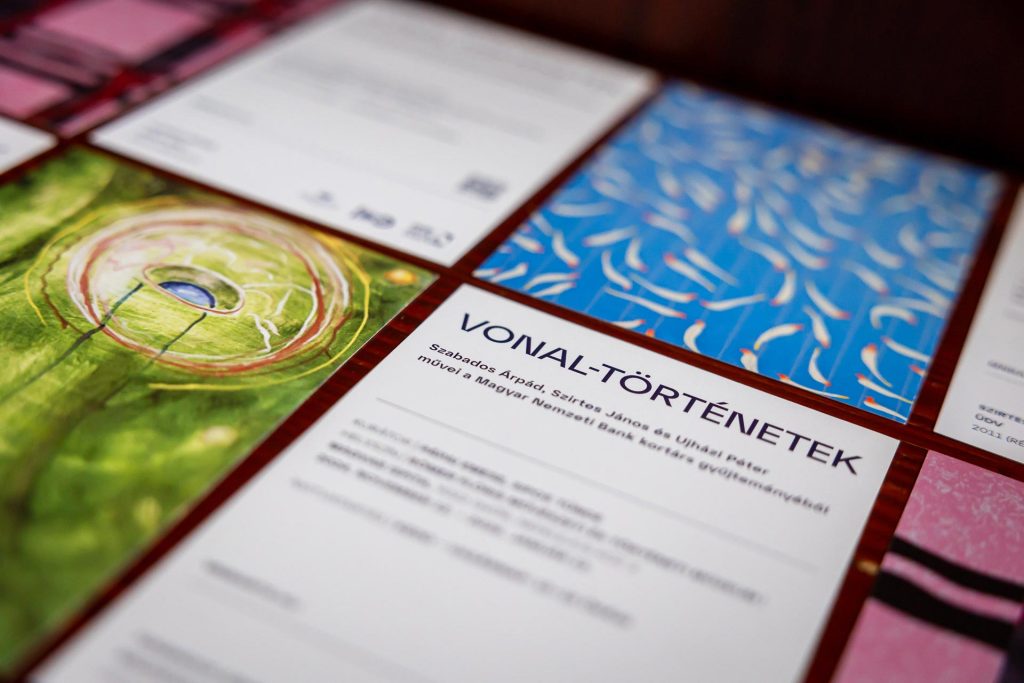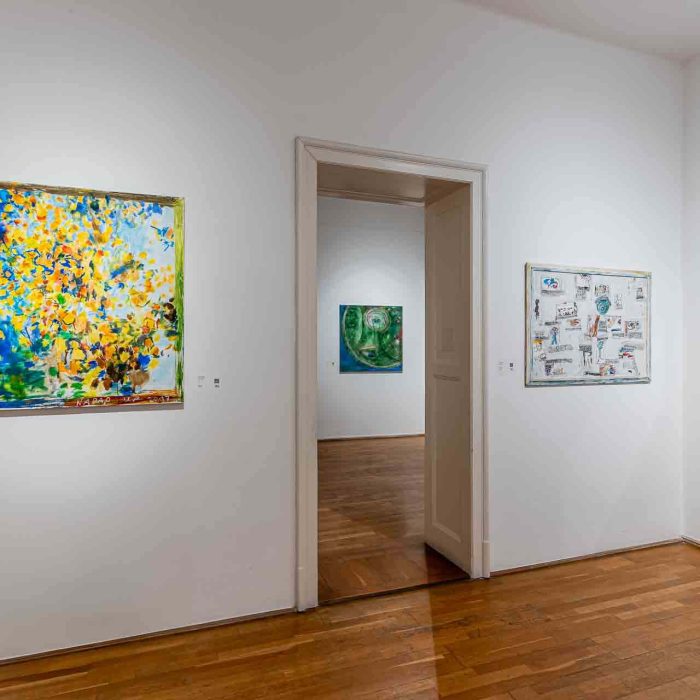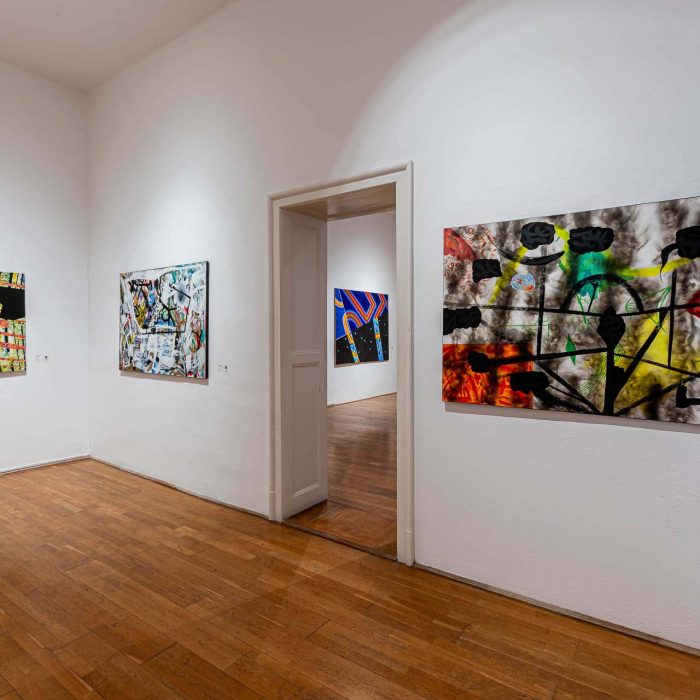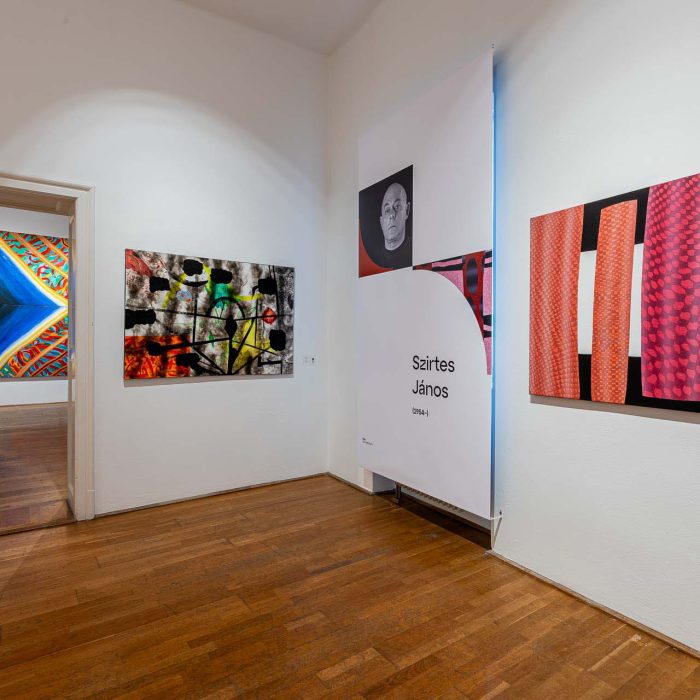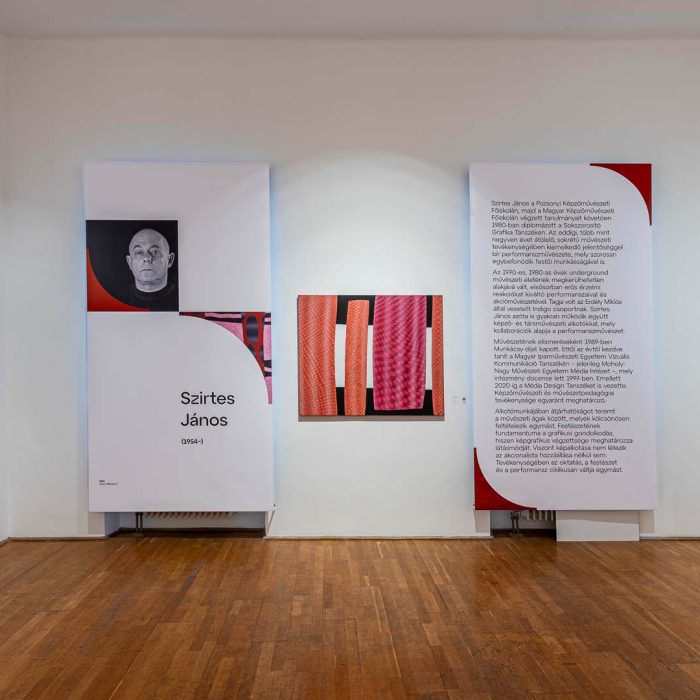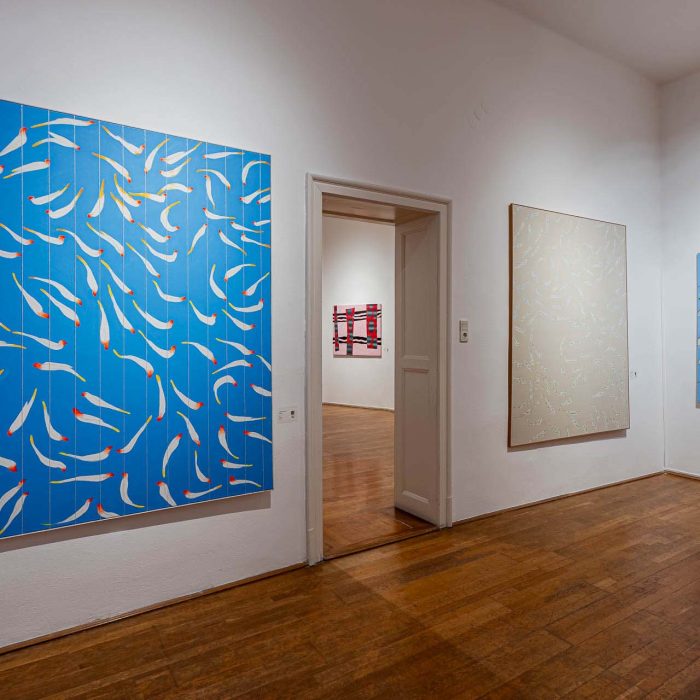Free-spiritedness, playfulness and instinct. At first glance, these keywords link the works of Árpád Szabados, János Szirtes and Péter Ujházi together.
Examining the paper-based works preserved in the art collections of the Rómer Flóris Museum of Art and History and of the Central Bank of Hungary (Magyar Nemzeti Bank, MNB) and the larger-scale paintings, typically built from gestures and abstract elements, it becomes apparent that the three bodies of work in our focus intersect from several points of view. Dr. Emese Pápai, art historian and the Chief Museum Curator of the hosting institution of the exhibition, has drawn attention to the concordance among the works of Szabados, Szirtes and Ujházi, who worked mainly as graphic artists and significant art educators.
In addition to the above, further similarities can be observed in their attitude as painters who push the boundaries of panel painting. Péter Ujházi reaches out from the physical frames of his paintings in such a way that his painted sights can be continued by imagination. János Szirtes leaves his marks also beyond his canvases during his performative creative process accomplished in active motion. Compositional parts falling outside the support are just as important as gestures captured in the main sights. Árpád Szabados broadens the relationships of his picture panels by transforming them into modular elements, so his compositions remain valid in multiple views.
Johan Huizinga’s homo ludens, i.e. ‘playing man’, theory is justified by the artistic activity of all three artists since one of the pillars of their creative method is precisely playfulness, which, according to the author, is the origin of all cultural activities. The direct and immersive attitude to art pedagogy, especially in the case of Árpád Szabados and János Szirtes, which has opened decisive paths for generations of contemporary artists, also draws on this approach.
The trialogue that has evolved among the three bodies of work also shows how the basic instinct of human beings to leave traces can be raised to a higher level by recording complex movements rather than primary signs.
Thus, the imprint of these movements can be captured in the exhibition entitled Line Stories, which wishes to draw attention to the playfully liberating effect of art through the works of the three artists.
The exhibition, organized by MNB Arts and Culture and the Rómer Flóris Museum of Art and History, features items selected from the Central Bank of Hungary’s contemporary collection.
Text: Tünde Sipos
Curators: Emese Pápai, Tünde Sipos
Opening: 10 November 2024
Venue: Rómer Flóris Museum of Art and History | Hungarian Ispita, 9022 Győr, Nefelejcs köz 3.
Exhibition on view: 12 November 2024 – 12 January 2025
Opening hours: Tuesday – Sunday: 10am–6pm

